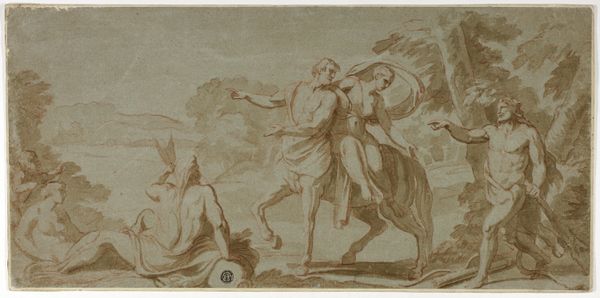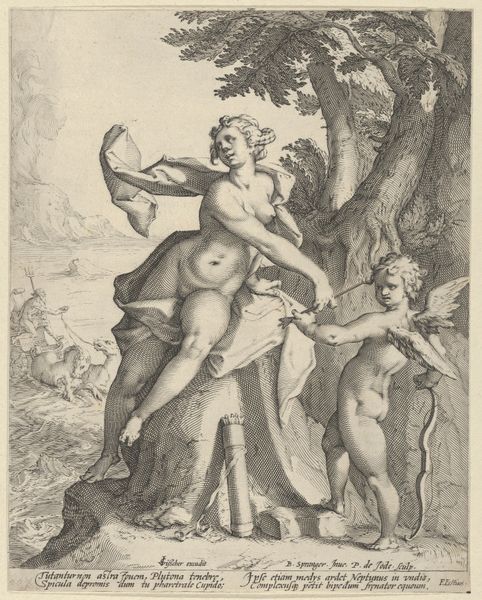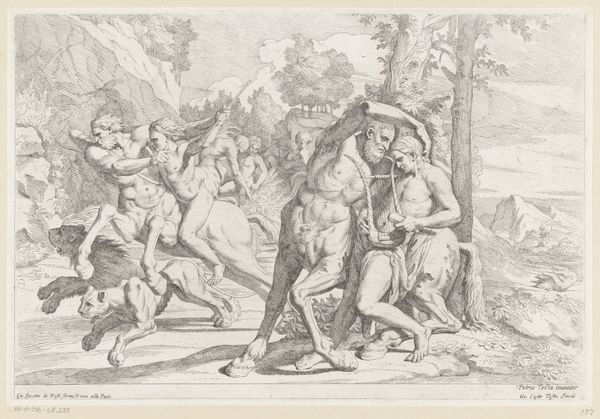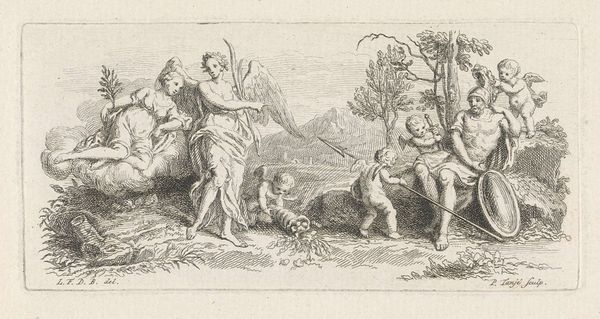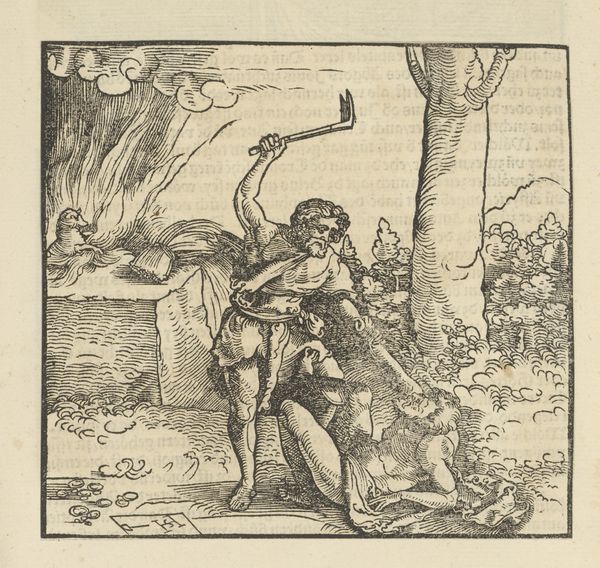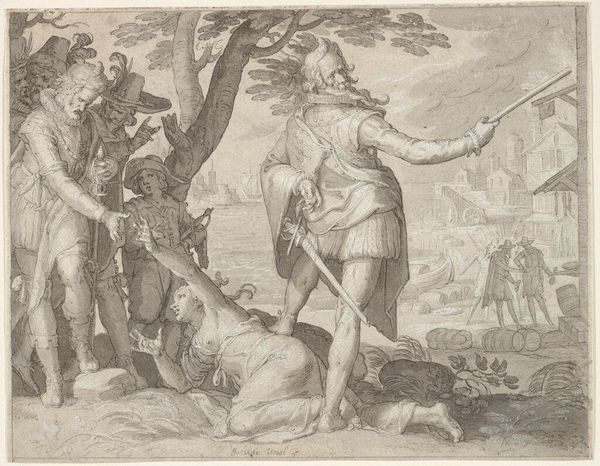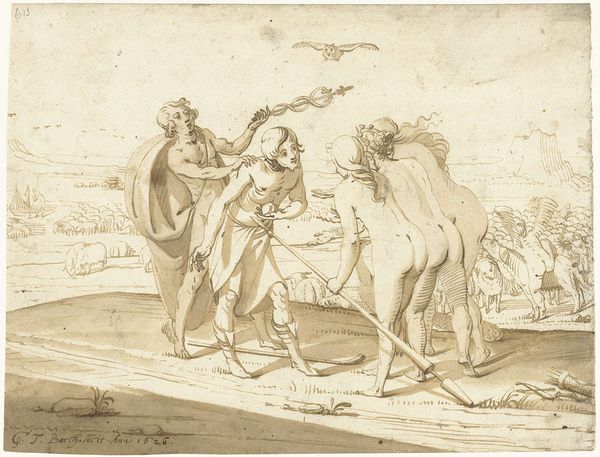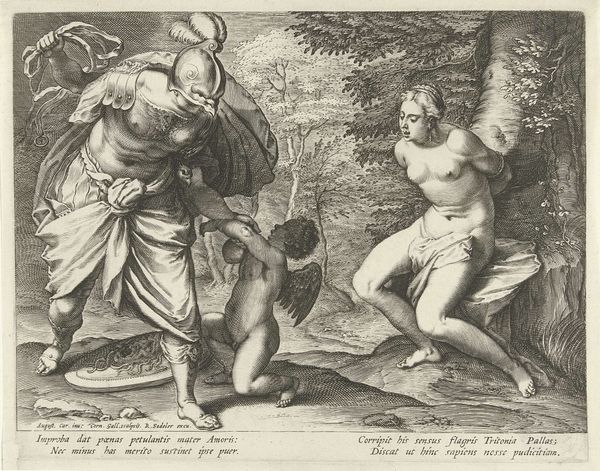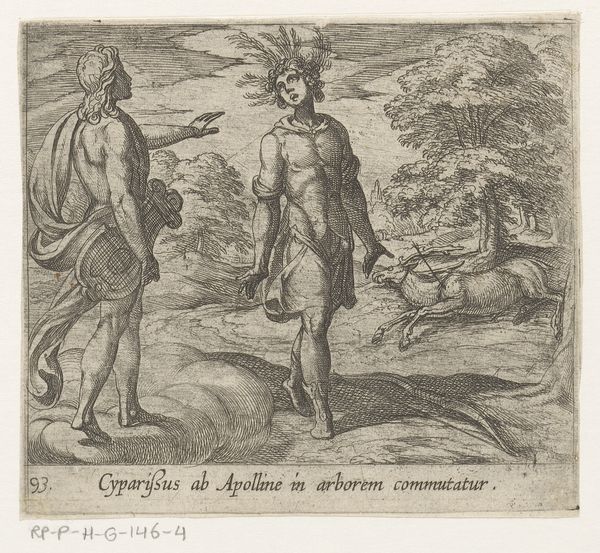
Venus and Adonis (?), nude in a landscape with a dog at left and Cupid at upper right 1750 - 1770
0:00
0:00
drawing, print, pencil
#
drawing
#
allegory
# print
#
pencil sketch
#
landscape
#
figuration
#
pencil
#
history-painting
#
nude
Dimensions: Sheet (Trimmed): 11 1/8 × 16 3/16 in. (28.3 × 41.1 cm)
Copyright: Public Domain
Editor: So, here we have "Venus and Adonis (?)" created sometime between 1750 and 1770 by Andrea Scacciati. It's a pencil drawing and print currently residing at the Met. There's something so…unfinished about it. It's captivating, though. How do you interpret this work? Curator: Well, from a materialist perspective, this print embodies a moment of artistic production itself. Scacciati’s choice of pencil and printmaking, mediums often associated with preparatory studies or wider distribution, pushes us to consider the labor involved. What was the intended audience, and how would that affect the availability, market value, and consumption of this piece? Editor: Interesting. I hadn't really thought about the *accessibility* of it, given it's a print. I was too caught up in thinking about, like, who Venus and Adonis were. Curator: Forget the narrative for a moment. Look at the line work. See how economical it is? How much raw paper do you see? That could suggest cost-effectiveness, mass production, or maybe the artist testing the boundaries of form and value through a minimal material expenditure. The *quality* of paper itself—was it locally sourced? Was it imported? How did that play a role in production value and consumer demographics? Editor: So you're saying that by looking closely at *how* it was made, and *what* it was made of, we learn about society at that time? It makes you think about what an artist leaves out as much as what they put in, like this scene looks rural. I am used to landscapes full of stuff. Why is this landscape pretty much empty? Curator: Precisely. This deliberate 'emptiness', given that landscape was often about control and ownership of property, brings to light its own cultural perspective on the period in which this scene was developed. Editor: Okay, I think I'm beginning to get it. It’s less about who Venus and Adonis were and more about how this *drawing* reached people, and how that making informs society. Curator: Precisely! And what does it tell us when ‘high art’ uses these very strategies for production? Now, *that's* an interesting avenue for consideration.
Comments
No comments
Be the first to comment and join the conversation on the ultimate creative platform.
